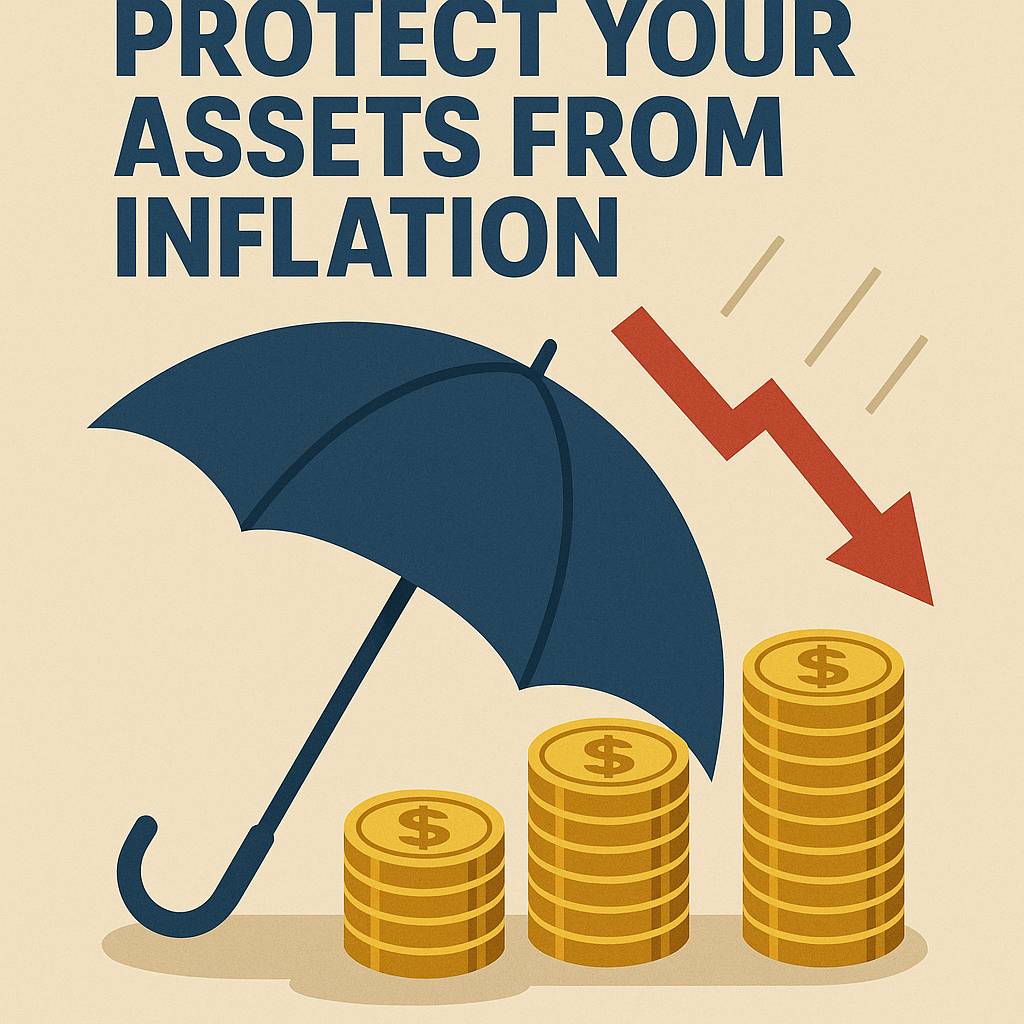Inflation quietly chips away at your purchasing power, making each dollar you hold a little less valuable as time goes on. While some inflation is normal—and even important for a healthy economy—sharp or surprises in inflation can eat into your savings, investments, and future income. If you’re serious about protecting your money, learning how to defend your assets from inflation isn’t just wise: it’s essential for preserving—and growing—your real wealth.
The main challenge with inflation is that it reduces what your money can buy. For example, if your investments earn a 3% return but inflation is at 5%, your actual gain, after accounting for inflation, is negative (-2%). Even as your balance goes up, your buying power drops. To beat inflation, your investments should ideally grow faster than the rising cost of living.
Invest in Real Assets
Tangible, or “real,” assets often hold their value during inflationary times. Real estate is a classic example: as construction costs and labor expenses climb, the value of existing homes and commercial spaces typically rises too. If you own rental property, you can usually increase rent to match inflation, keeping your income on track with costs. For a hands-off approach, consider Real Estate Investment Trusts (REITs), which let you invest in property portfolios through the stock market.
Look to Equities with Pricing Power
Stocks can be another solid shield, especially shares of companies that can pass on higher costs to their customers. Think businesses that sell essentials or have loyal followings—like those in energy, consumer goods, healthcare, and utilities. Such companies often keep profits growing even when prices rise overall. Spreading your investments across different sectors and regions, using mutual funds or ETFs, helps balance risk and chase long-term growth that outpaces inflation.
Consider Inflation-Protected Securities
For a more direct defense, government-backed inflation-protected bonds are a strong option. In the U.S., Treasury Inflation-Protected Securities (TIPS) are designed specifically for this purpose: their value and interest payments rise with inflation, so your original investment holds its ground as prices climb. While TIPS might not offer high returns in times of low inflation, they’re a reliable anchor when the cost of living spikes.
Diversify with Commodities
Commodities—like oil, natural gas, gold, silver, and even crops—often get more expensive as inflation climbs since they’re the building blocks for most goods and services. You can invest in them directly or through ETFs that track commodity prices. However, commodity markets can swing wildly, so they’re best used as a smaller, diversified piece of your overall portfolio.
Mind Your Cash
Don’t overlook your cash. Too much money sitting in a regular savings account will steadily erode in value during inflationary periods. While it’s smart to have an emergency fund, shop around for high-yield savings, money market accounts, or short-term CDs with rates that at least try to keep pace with inflation. Any cash beyond your short-term needs should be working harder for you, not quietly losing value.
A Holistic Approach Wins
Protecting against inflation isn’t about relying on one strategy. It’s about building a diverse portfolio tailored to your risk tolerance, time horizon, and goals. By spreading your assets among real estate, selected equities, inflation-linked bonds, commodities, and keeping an eye on your cash, you give yourself the best chance of preserving—and growing—your purchasing power. A proactive, thoughtful approach now can help your hard-earned wealth stand strong, no matter what inflation brings down the road.
